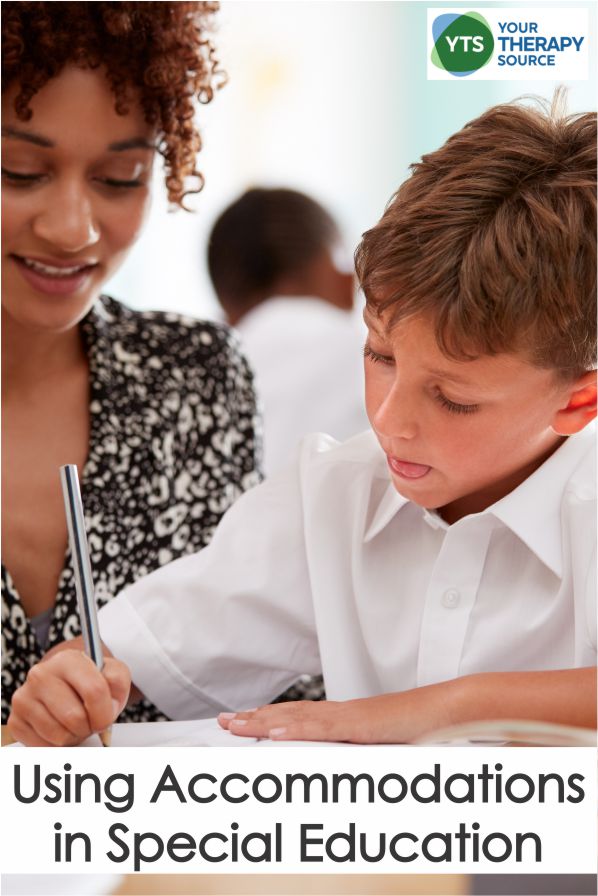Accommodation in Special Education – 5 Ways to Help Students Succeed

When is comes to providing an accommodation in special education it can get confusing. To begin with, it is important to understand exactly what is an accommodation.
Definition of Accommodation in Special Education
Accommodations allow student with disabilities to “demonstrate their knowledge on assessments without interference from their disabilities, as their non-disabled peers are able to do, while not giving students with disabilities an unfair advantage over their peers”.
Students need an individualized approach to determine what accommodations are necessary based on their abilities. Consideration must be taken to factor in the student’s disability and the academic material. Not all students struggle in the same areas.
5 Different Ways to Help Students Use Accommodation in Special Education to Succeed on Assessments
An accommodation in special education on assessments can be provided via 5 basic categories.
Presentation Accommodations
Presentation accommodations are the different ways to provide instruction to the learner. Examples would be enlarged text, read aloud (ie proctor reads a test or audio file), etc.
Time Accommodations
Time accommodations can be provided in various ways. Teachers can allow for extended time to take a test or they can break up the test into several sessions.
Setting Accommodations
Setting accommodations are provided when a student benefits from taking a test in another room or with a smaller group of students. Special lighting is another example of a setting accommodation in special education.
Response Accommodations
Adapting how the student can respond during assessments is a response accommodation in special education. Examples are dictating answers to a scribe, using a computer, or recording answers in a test booklet.
Aid Accommodations
If a student uses a device during an assessment that is an aid accommodation. Examples are calculators and voice to text.
When Should a Student Use an Accommodation in Special Education?
There is not an easy answer to this question. Often times, school districts provide “cookie cutter” type accommodations and every student seems to have the similar IEPs. The special education team (including the student) should come together to determine what is best.
The easiest way to start is to determine if the accommodation helps the student show how much they know. Do they use the accommodation in the classroom? If they do not, then they probably will not benefit from using it on an assessment.
In order to provide the most appropriate accommodations in special education, the team should be knowledgeable about:
- accommodations requirements and possibilities.
- state standards on testing requirements.
- collecting data and deciding the best accommodations for specific students.
- the roles of the general and special education teachers in the decision making process.
It is important to remember that not every accommodation is appropriate for every student or for every assessment
test. Take the time to determine what is best for each individual student and each testing situation.
Reference: Edgemon, E. A., Jablonski, B. R., & Lloyd, J. W. (2006). Large-scale assessments: A teacher’s guide to making decisions about accommodations. Teaching Exceptional Children, 38(3), 6-11.
Self-Advocacy for Students is an evidence-based digital workbook that uses a 10 step process to teach students about their strengths, challenges and accommodations to empower them to live a more independent life at school, home and the workplace. FIND OUT MORE HERE.




